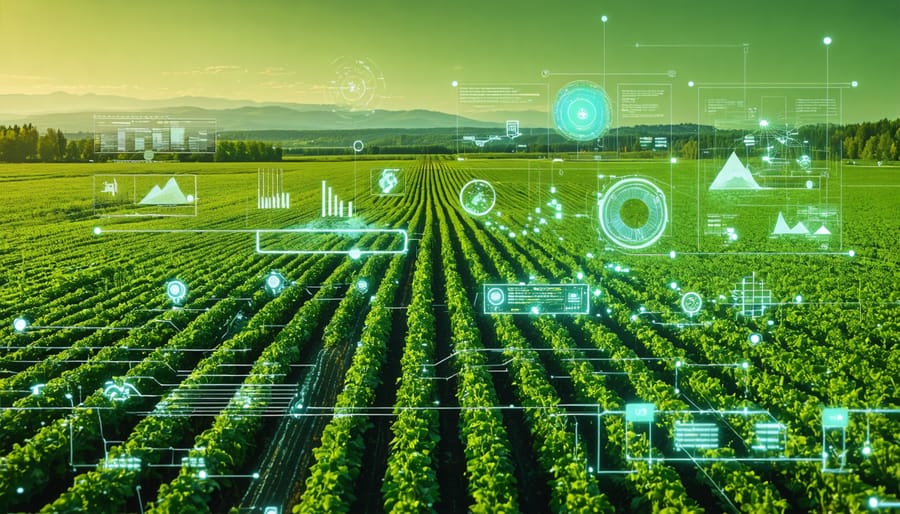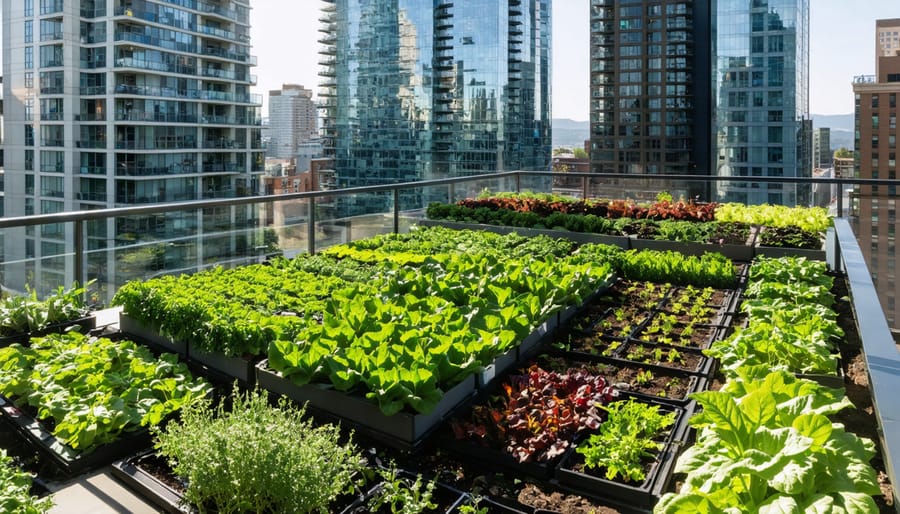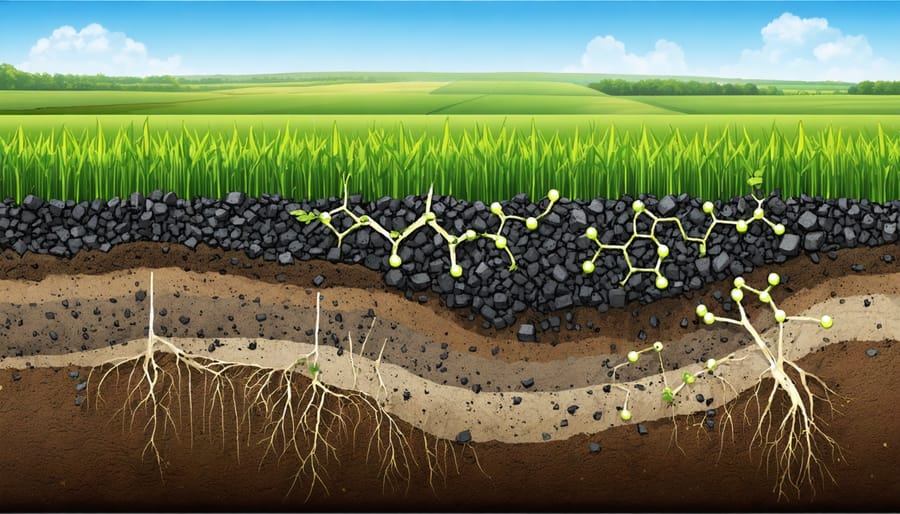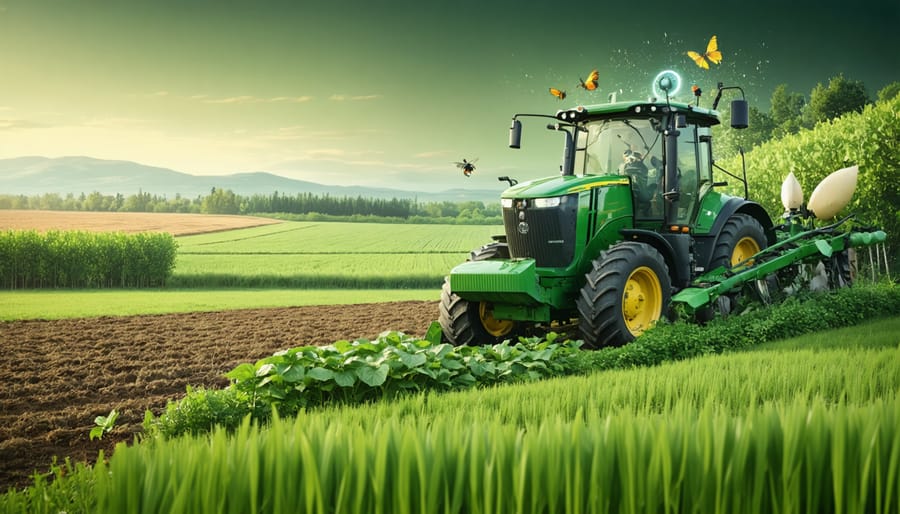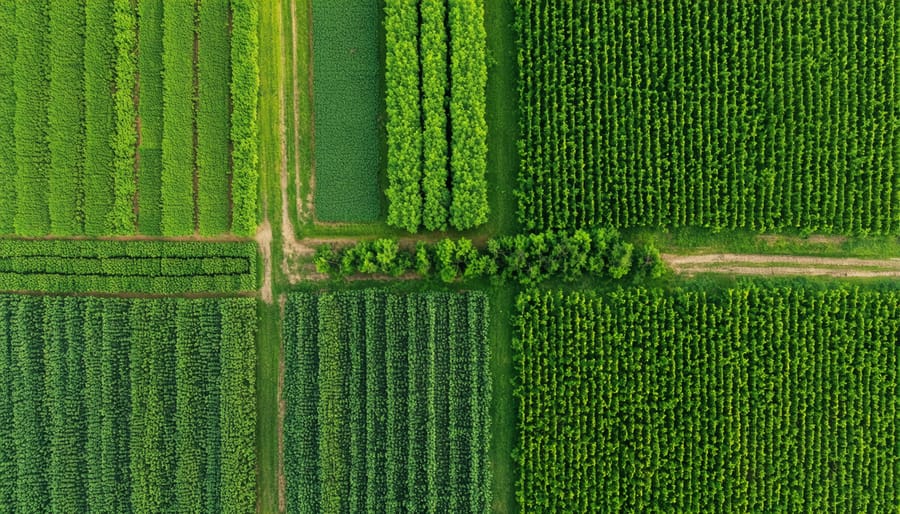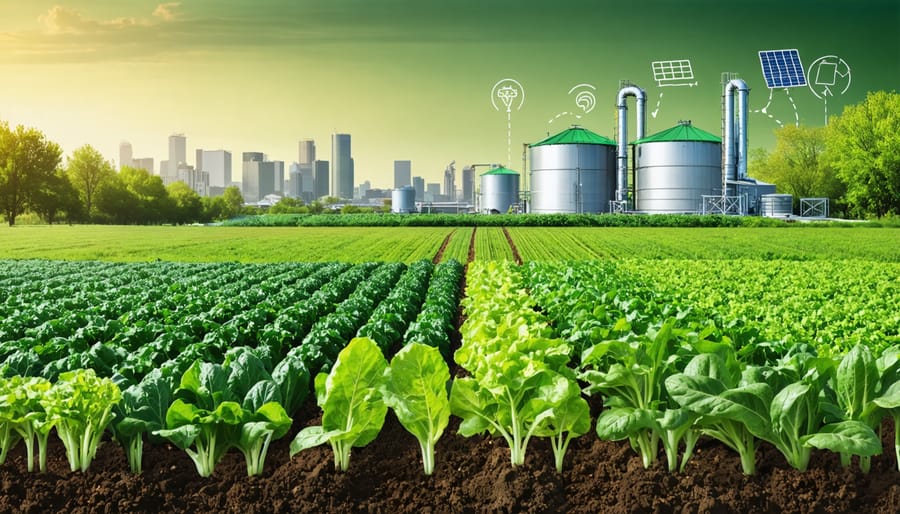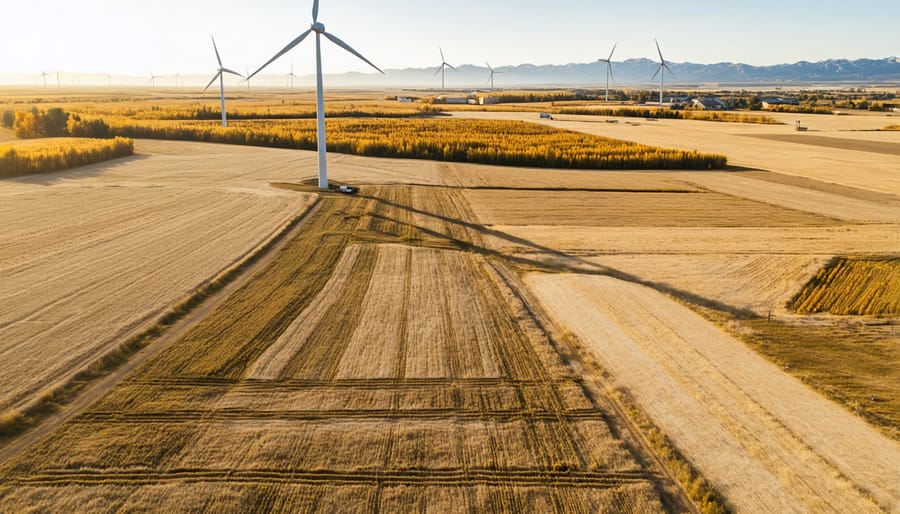Transforming Alberta’s farmland through digital farming innovations demands a delicate balance between technological advancement and environmental stewardship. Today’s pioneering farmers harness smart sensors, precision agriculture, and data analytics while reducing their carbon footprint by 40% compared to traditional methods. At Wheatland County’s Morrison Farms, real-time soil monitoring systems cut water usage by 30% while maintaining crop yields, proving that digital solutions and sustainability can work in harmony. As global food demand rises and climate challenges intensify, sustainable digitalization offers Prairie farmers a practical pathway to optimize resources, enhance productivity, and preserve our agricultural heritage for future generations. Our community’s success stories demonstrate that embracing digital tools thoughtfully doesn’t mean sacrificing environmental responsibility – it means strengthening both.
Digital Technologies That Actually Save You Money and The Soil
Precision Agriculture Tools That Pay For Themselves
In Alberta’s diverse agricultural landscape, several precision farming tools have proven their worth through measurable returns on investment. GPS guidance systems, which cost between $5,000 to $15,000, typically pay for themselves within two growing seasons through reduced input overlap and improved field efficiency. Local farmer Dave Thompson from Olds reports saving approximately 8% on seed and fertilizer costs in his first year alone.
Variable-rate technology (VRT) has shown particularly strong results in our variable soil conditions. Studies from Agriculture and Agri-Food Canada demonstrate that VRT can reduce fertilizer use by 14% while maintaining or improving yields. Initial investments of $20,000-30,000 are commonly recovered within 3-4 years on farms larger than 1,000 hectares.
Soil moisture sensors, starting at $2,000 per system, help optimize irrigation timing and reduce water usage by up to 25%. Red Deer County farmer Sarah Mitchell credits these sensors with saving her operation $15,000 annually in irrigation costs while improving crop quality.
Remote sensing through drones or satellite imagery services, with entry costs around $3,000, enables early detection of crop stress and disease. This preventative approach typically saves $40-50 per hectare in pest management costs. Many Alberta farmers are accessing these services through cost-sharing programs offered by agricultural services boards, making the initial investment even more manageable.
Real-time yield monitoring systems have become particularly valuable for data-driven decision making, with most systems paying for themselves within two harvest seasons through improved crop management and marketing decisions.
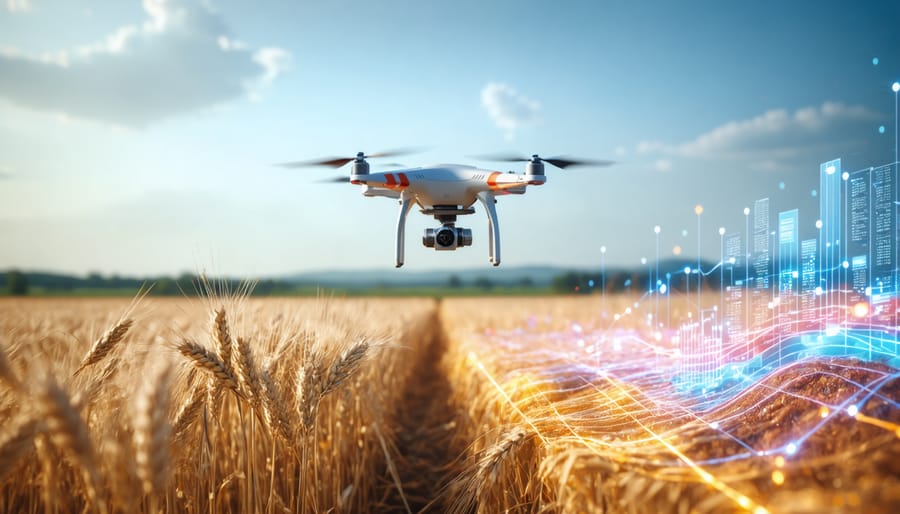
Smart Irrigation Systems That Conserve Water and Energy
Modern smart irrigation systems are revolutionizing how Alberta farmers manage water resources while maintaining crop yields. These systems combine soil moisture sensors, weather data, and automated controls to deliver precisely the right amount of water when and where it’s needed. By implementing advanced water conservation techniques, farmers can reduce water usage by up to 30% while improving crop health.
Local success stories, like the Peterson family farm near Lethbridge, demonstrate the practical benefits. After installing smart irrigation controllers and soil moisture sensors, they decreased their water consumption by 25% and saw a 15% reduction in energy costs during their first season.
These systems typically include:
– Soil moisture sensors placed at various depths
– Weather stations that monitor rainfall and evaporation
– Smart controllers that adjust watering schedules automatically
– Mobile apps for remote monitoring and control
The initial investment in smart irrigation technology often pays for itself within 2-3 growing seasons through reduced water and energy costs. Government grants and incentives are available through the Canadian Agricultural Partnership to help offset installation costs.
For best results, combine these systems with other sustainable practices like mulching and crop rotation. Many local agricultural extension offices offer training sessions on system setup and maintenance, ensuring farmers can maximize the benefits of their investment while contributing to water conservation efforts.
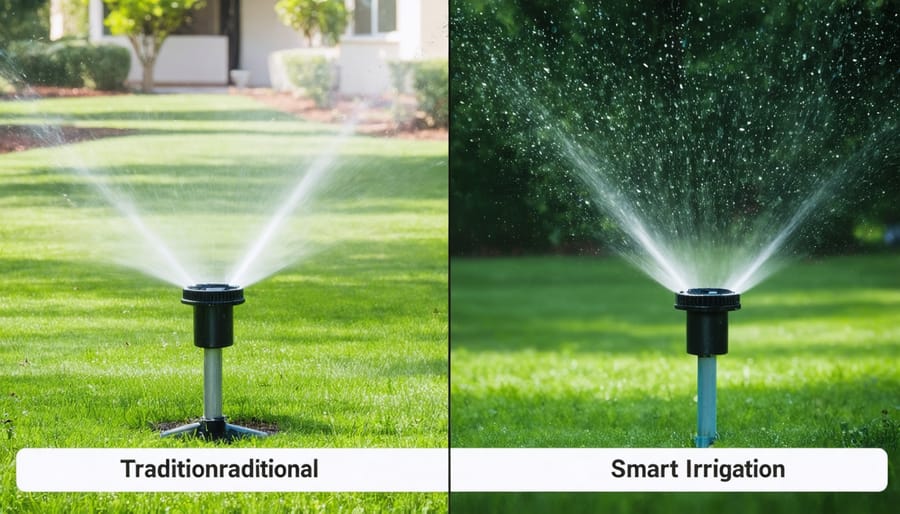
Real Alberta Success Stories: Digital Innovation in Action
The Thompson Family’s Smart Soil Management Journey
Located just outside Red Deer, the Thompson family has transformed their 800-hectare farm through innovative soil management practices powered by digital technology. Sarah Thompson, a third-generation farmer, implemented smart soil sensors and GPS-guided precision agriculture systems in 2019, marking the beginning of their digital transformation journey.
“We were struggling with variable soil conditions across our fields,” Sarah explains. “Some areas needed more attention than others, but we couldn’t pinpoint exactly where without the right tools.” The family invested in a network of soil moisture sensors and integrated them with weather station data to optimize irrigation and fertilizer application.
The results were remarkable. Within two growing seasons, the Thompsons reduced their water usage by 30% and decreased fertilizer application by 25% while maintaining crop yields. Their system now provides real-time soil health data through a user-friendly mobile app, allowing them to make informed decisions from anywhere on the farm.
The family’s success hasn’t gone unnoticed. Neighbouring farms have started adopting similar technologies, creating a community of digitally-enabled sustainable farmers. The Thompsons regularly host field days to share their experiences and help others understand the practical benefits of digital agriculture.
“The initial investment seemed daunting,” admits Sarah’s father, Jim Thompson. “But the savings in inputs and the improvement in our soil health made it worthwhile. Plus, we’re better prepared for extreme weather events now.” The family continues to fine-tune their system, recently adding artificial intelligence capabilities to predict potential soil issues before they become problems.
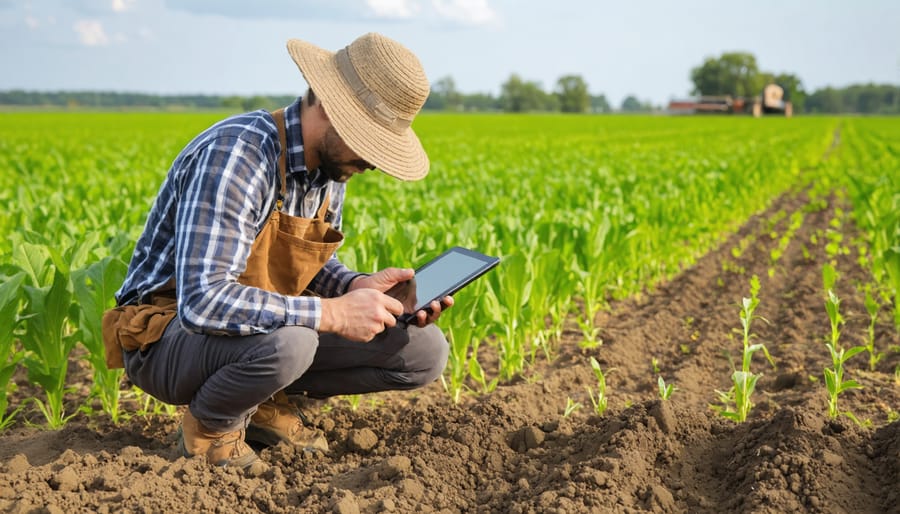
How Red Deer Valley Farms Cut Costs with Digital Monitoring
When third-generation farmer Jim Thompson noticed his energy bills climbing at Red Deer Valley Farms, he knew something had to change. In 2021, he implemented a digital monitoring system across his 2,000-hectare operation, focusing on tracking power consumption in grain storage and irrigation systems.
“The initial investment was $45,000, but we recovered that within 18 months,” Thompson explains. “We’re now saving approximately $28,000 annually on electricity costs alone.”
The system uses smart sensors to monitor temperature, humidity, and power usage in real-time. When grain bin temperatures rise above optimal levels, the system automatically adjusts ventilation settings, preventing unnecessary fan operation. Similarly, the irrigation monitoring ensures water pumps run only when needed, reducing both water and electricity consumption.
The farm’s success caught the attention of the Alberta Agricultural Technology Initiative, which now uses Red Deer Valley as a demonstration site for other farmers interested in sustainable digitalization. “What surprised us most was how the data helped us identify issues we didn’t even know existed,” says Thompson. “We discovered one grain bin was using 40% more power than the others due to a faulty motor.”
Beyond energy savings, the digital system has improved grain quality management. Real-time moisture monitoring has helped prevent spoilage, reducing annual losses by approximately 3%. The farm also uses the collected data to optimize delivery schedules and negotiate better rates with buyers by demonstrating consistent quality control.
Thompson emphasizes that the transition wasn’t without challenges, but the support from local tech providers and agricultural extension services made the process manageable. “It’s about starting small, learning the system, and scaling up when you’re ready,” he advises.
Making the Digital Transition Without Breaking the Bank
Available Grants and Support Programs
Several funding opportunities are available to help Alberta farmers transition to sustainable digital farming practices. The Canadian Agricultural Partnership (CAP) offers grants of up to $25,000 for technology adoption and digital infrastructure improvement. Farmers can apply for these funds to implement precision agriculture tools, smart irrigation systems, and data management platforms.
The Farm Technology Program, specifically designed for Alberta producers, provides cost-sharing opportunities covering up to 50% of eligible expenses for digital agriculture solutions. This includes investments in soil sensors, GPS guidance systems, and farm management software.
Environmental Farm Plan (EFP) participants can access additional funding through the Sustainable Agriculture Implementation Program, which offers grants ranging from $5,000 to $75,000 for projects that combine environmental stewardship with digital innovation.
For smaller operations, the Digital Economy Program provides micro-grants of up to $5,000 to help farmers establish their digital presence and implement basic technology solutions. The Agricultural Financial Services Corporation (AFSC) also offers low-interest loans specifically for technology upgrades and sustainable farming initiatives.
Local agricultural societies and producer groups frequently organize workshops on accessing these funding opportunities. The Alberta Agriculture and Forestry office provides free consultation services to help farmers navigate the application process and maximize their chances of securing financial support.
Remember to check application deadlines and eligibility criteria regularly, as programs are updated annually to reflect changing industry needs and priorities.
Step-by-Step Implementation Strategy
Begin your digital transformation journey with these manageable steps that prioritize both efficiency and sustainability. Start by conducting a thorough assessment of your current operations, identifying areas where technology could reduce resource waste or improve productivity. Many Alberta farmers find success by focusing on one system at a time, such as implementing soil moisture sensors or GPS-guided equipment.
Create a realistic timeline spanning 12-24 months, allowing proper training and adjustment periods. Consider starting with basic digital tools like farm management apps or weather monitoring systems before advancing to more complex solutions. Remember, sustainable digitalization isn’t about adopting every new technology – it’s about choosing tools that align with your farm’s specific needs and environmental goals.
Partner with local agricultural technology providers who understand Alberta’s unique farming conditions. Many offer trial periods or scaled implementation plans, helping you manage costs while learning new systems. Take advantage of workshops and training sessions offered by agricultural extension services and equipment dealers.
Document your progress and measure outcomes using simple metrics like reduced water usage or decreased fuel consumption. Share experiences with neighbouring farmers and learn from their implementations. Success stories from the Lethbridge region show that farms starting with small, strategic digital adoptions often see the most sustainable long-term benefits.
Build in regular review periods to evaluate the effectiveness of new technologies and adjust your approach as needed. This ensures your digital transformation remains both environmentally and economically sustainable.
Future-Proofing Your Farm with Sustainable Tech
As we look ahead to the next decade of farming in Alberta, staying competitive means embracing both technological innovation and environmental stewardship. The key is implementing climate-smart farming solutions that can adapt to our changing agricultural landscape.
Start by assessing your farm’s current digital infrastructure. A reliable internet connection and basic sensor systems form the foundation for future upgrades. Consider investing in scalable technologies that can grow with your operation, such as modular IoT systems for soil monitoring or expandable precision agriculture equipment.
Many Alberta farmers are finding success with hybrid approaches. For example, the Peterson family farm near Red Deer combines traditional wisdom with smart irrigation systems, reducing water usage by 30% while maintaining crop yields. They started small, testing new technologies on a single field before expanding across their operation.
Data management will be crucial moving forward. Implement secure cloud storage solutions and ensure your team is trained in basic data analysis. This preparation allows for easier adoption of emerging technologies like AI-driven crop management or automated harvesting systems when they become commercially viable.
Consider joining local farming cooperatives or technology sharing programs. These partnerships can help distribute the cost of expensive equipment while building community resilience. The Southern Alberta Agricultural Innovation Network, for instance, allows members to test new sustainable technologies before making major investments.
Remember to maintain flexibility in your tech adoption strategy. What works for one farm may not work for another, and technology that seems promising today might be obsolete tomorrow. Focus on solutions that offer clear environmental benefits while improving operational efficiency.
Keep an eye on developing trends like vertical farming integration, regenerative agriculture technology, and carbon credit monitoring systems. These innovations are gaining traction in Canadian agriculture and could provide new revenue streams while supporting environmental sustainability.
As we’ve explored throughout this article, sustainable digitalization offers tremendous potential for Canadian farmers to enhance their operations while protecting our environment for future generations. The key is to start small and scale thoughtfully, implementing digital solutions that align with your farm’s specific needs and capabilities.
Begin by assessing your current operations and identifying areas where digital tools could make the most impact. Consider joining local agricultural technology groups or reaching out to the Alberta Agriculture and Forestry department for guidance on available resources and funding opportunities. Many successful farmers in our region started with simple solutions like soil sensors or basic farm management software before expanding to more complex systems.
Remember that sustainable digitalization isn’t just about adopting new technology – it’s about creating a balanced approach that considers environmental impact, economic viability, and social responsibility. Take advantage of demonstrations at agricultural shows, participate in workshops, and connect with other farmers who have already begun their digital transformation journey.
For those ready to take the next step, consider scheduling a consultation with an agricultural technology advisor or connecting with your local agricultural extension office. These experts can help develop a customized roadmap for your farm’s digital transformation while ensuring sustainability remains at the forefront of your decisions.
By embracing sustainable digitalization thoughtfully and strategically, we can work together to build a more resilient and environmentally conscious agricultural sector in Alberta and across Canada.

